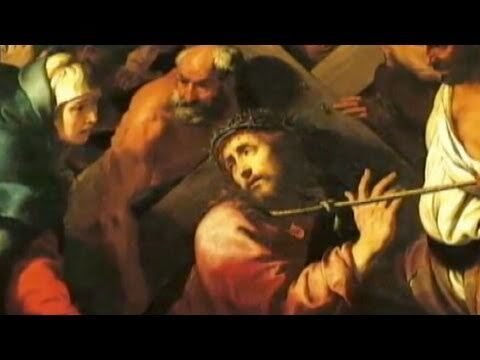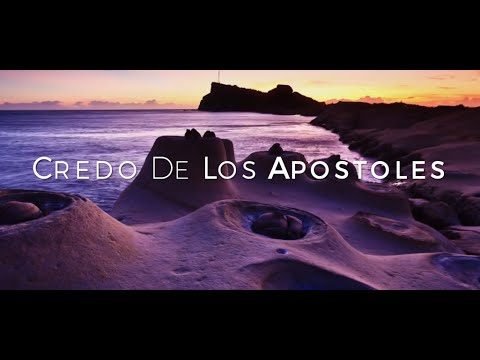Exploring the Decapolis: Insights from the Bible
The Decapolis, a fascinating region mentioned in the Bible, offers a unique glimpse into the cultural and historical dynamics of the ancient world. Comprising ten influential cities on the eastern frontier of the Roman Empire, this area was a melting pot of Greek, Roman, and local influences, shaping the backdrop for many biblical events and teachings. As we explore the significance of the Decapolis in scripture, we uncover its role in the spread of early Christianity and its enduring impact on the faith today. Join us on a journey through time to understand how this intriguing region continues to resonate within biblical narratives.
What events took place in Decapolis according to the Bible?
In the Decapolis, a region predominantly inhabited by Gentiles, Jesus made a significant impact as described in Matthew 4:23–25. This area became a focal point for His ministry, where He drew large crowds eager for healing and hope. Unlike His predominantly Jewish audiences, the diverse population of the Decapolis welcomed His teachings, allowing Jesus to expand His message beyond traditional boundaries and connect with a wider array of followers. This unique interaction marked an important moment in His journey, showcasing the universal appeal of His message of compassion and healing.
What are the ten cities that comprised the Decapolis?
The Decapolis, a league of ten cities during the Roman period, was a vibrant hub of trade and culture in the ancient Near East. According to Pliny the Elder, these cities included Scythopolis, known today as Bet Sheʾan in Israel, along with Hippos, Gadara, Raphana, and Dion. The region also featured Pella, Gerasa, and Philadelphia, which is now modern Amman, Jordan. Canatha and the prominent city of Damascus, the present-day capital of Syria, completed this influential alliance.
Each city in the Decapolis boasted unique characteristics and contributions to the cultural mosaic of the time. This league not only facilitated economic interaction among its members but also fostered the exchange of ideas and customs, reflecting a blend of Hellenistic and local traditions. The legacy of the Decapolis remains evident in the archaeological sites and historical narratives that continue to intrigue scholars and travelers alike.
What miracles did Jesus perform in the Decapolis?
In the region of Decapolis, Jesus performed a remarkable miracle that is uniquely highlighted in the Gospel of Mark. During His visit, He encountered a man who was both deaf and mute, and with compassion, Jesus restored his ability to hear and speak. This profound act not only demonstrated His divine power but also showcased His deep empathy for those suffering, leaving a lasting impact on the community and reinforcing His role as a healer and miracle worker.
Uncovering Ancient Cities of the Bible
The ancient cities mentioned in the Bible, often shrouded in mystery, continue to captivate archaeologists and historians alike. Excavations in regions such as Israel and Jordan have unveiled remarkable sites like Jericho and Megiddo, revealing intricate urban structures, fortifications, and religious artifacts. Each discovery not only sheds light on the daily lives of biblical inhabitants but also provides context to the narratives that have shaped religious thought for centuries. As layers of earth are removed, the stories of these cities emerge, rich with cultural significance.
These archaeological endeavors do more than just confirm historical accounts; they foster a deeper understanding of the socio-political dynamics of the time. By analyzing the remnants of ancient civilizations, researchers can piece together the interactions between different cultures, trade routes, and even the impact of natural disasters on these communities. The ongoing exploration of these biblical cities invites us to reflect on the enduring legacy of faith, resilience, and human ingenuity that resonates through the ages.
A Journey Through Biblical History
Biblical history is a captivating tapestry woven from the lives of countless individuals, pivotal events, and divine interventions. From the creation narrative in Genesis to the prophetic visions of Revelation, each story reveals profound truths about faith, redemption, and humanity’s quest for meaning. The journeys of figures like Moses, David, and Paul not only shape the religious landscape but also resonate with universal themes of struggle, triumph, and the search for purpose. As we traverse this ancient narrative, we uncover the wisdom that has guided generations and continues to inspire millions today.
As we delve deeper into this journey, we encounter the rich cultural and historical contexts that influence these timeless stories. The ancient lands of Israel, with their diverse landscapes and peoples, serve as a backdrop for the unfolding drama of faith and doubt. Through the lens of archaeology and scholarship, we gain insights into the lives of those who lived these narratives, revealing connections between the past and present. This exploration not only enriches our understanding of biblical texts but also invites us to reflect on our own journeys of faith, encouraging us to seek meaning and connection in our everyday lives.
The Cultural Legacy of the Decapolis
The Decapolis, a coalition of ten ancient cities in the eastern Roman Empire, stands as a testament to the rich tapestry of cultural exchange and influence in the region. Established during the Hellenistic period, these cities—such as Jerash, Gadara, and Pompeii—flourished under Roman rule, blending Greek, Roman, and local traditions. This unique amalgamation fostered advancements in architecture, philosophy, and the arts, leaving a lasting impact that resonates through the centuries.
Visitors today can still marvel at the impressive ruins that speak to the architectural prowess of the Decapolis. From the grand theaters and colonnaded streets to intricate mosaics and bathhouses, these remnants reveal the sophisticated urban planning and artistic achievements of their time. The sites not only reflect the aesthetic values of a multicultural society but also serve as a reminder of the shared heritage that shaped the identities of the peoples who inhabited this vibrant region.
Moreover, the legacy of the Decapolis extends beyond its physical remnants; it continues to influence modern culture and scholarship. The blending of traditions in these cities has inspired countless artists, historians, and archaeologists, who seek to understand the complexities of cultural interchange. As we explore the echoes of the past, the Decapolis emerges as a powerful symbol of unity amidst diversity, reminding us of the enduring connections that transcend time and geography.
Spiritual Lessons from Ancient Ruins
Exploring ancient ruins offers more than just a glimpse into the past; it serves as a profound reminder of our spiritual journey. These remnants of bygone civilizations echo the values and beliefs of those who once thrived in their shadows. Walking through crumbling temples and weathered stones, we can reflect on the impermanence of life and the importance of humility. Each site tells a story of devotion, sacrifice, and the quest for understanding, inviting us to examine our own spiritual paths.
The silent whispers of history found in these ruins often reveal universal truths that transcend time and culture. They encourage us to connect with nature and the cosmos, fostering a sense of unity with the world around us. As we stand amidst these monumental structures, we are reminded of the interconnectedness of all beings and the shared pursuit of meaning. In this way, ancient ruins become sacred spaces for introspection, urging us to seek wisdom in our daily lives.
Ultimately, the lessons gleaned from these forgotten places call us to cultivate a deeper appreciation for our existence. They challenge us to honor our roots while remaining open to growth and transformation. By embracing the teachings of the past, we can navigate our present with greater clarity and purpose, allowing the spirit of ancient wisdom to guide us on our quest for enlightenment and fulfillment.
Discovering Faith in Historic Landscapes
Throughout history, landscapes have served as both a backdrop and a catalyst for spiritual exploration. From the serene hills of ancient pilgrimage routes to the majestic cathedrals that rise above bustling cities, these sites invite contemplation and reflection. Each step taken on these historic grounds is a journey through time, where the echoes of faith resonate in the whispers of the wind and the rustle of leaves. The natural beauty surrounding these landmarks enhances the experience, encouraging a deeper connection to both the environment and the divine.
As modern seekers traverse these sacred spaces, they find inspiration in the stories etched into the landscape. The remnants of monasteries, temples, and sacred groves tell tales of devotion and resilience, reminding us that faith has always found a home in the heart of nature. The silence found in these hallowed grounds offers a reprieve from the chaos of everyday life, allowing individuals to pause, reflect, and reconnect with their beliefs. Each visit serves as a reminder of the enduring relationship between humanity and the divine, rooted in the very earth we walk upon.
The act of discovering faith in these historic landscapes is not merely about visiting sites of the past; it is an invitation to engage with the present. Through meditation, prayer, or simply being present in nature, individuals can cultivate a sense of peace and purpose. As we explore these revered locations, we uncover not just the stories of those who walked before us, but also the potential for personal transformation. In this journey, we learn that faith can flourish in the most unexpected places, nourishing our spirits and guiding us toward a deeper understanding of ourselves and the world around us.
The Decapolis stands as a fascinating testament to the intersection of culture, commerce, and faith in the ancient world. Its significance in biblical narratives highlights the diverse influences that shaped early Christianity and the profound legacy of these ten cities. By exploring the Decapolis, we gain deeper insights into the historical and spiritual landscape of the time, inviting us to reflect on how these ancient stories continue to resonate in our modern lives.







